
According to the latest expert findings, about 90 percent of the population of the Gaza Strip is malnourished. The situation in Gaza – from the first person: hunger, despair and fragile shoots of life on the ruins Peace and security
“We saw corpses strewn all over the place, rotting in the sun,” says Jonathan Dumont, head of the World Food Programme’s (WFP) Emergency Liaison Unit. Despite his long experience working in conflict zones around the world, he says the destruction and suffering he witnessed in Gaza was “on a completely different scale.”
Since the heavy bombing of Gaza began in October 2023 in response to Hamas’s deadly attack on Israel, more than 45,000 Palestinians have been killed and nearly 100,000 injured in the Strip.
The vast majority of Gaza’s residents – some 90 percent – are now internally displaced, forced to move several times to escape airstrikes and active fighting. Hundreds of thousands of homes have been destroyed in the conflict, and more than 345,000 people are starving.
Jonathan Dumont reflected on the dire situation in Gaza shortly after returning from a mission to the Strip.
“I just need food…”
“I’m hungry,” Abdul Rahman told me. We were in the southwestern Gaza town of Khan Younis, where World Food Programme (WFP) workers were pouring steaming rice soup into bowls for desperate people. One boy cried, afraid that the food would run out before his turn.
“I used to have big demands and dreams,” Rahman says. “Now I just need food. I can’t even get bread.”
I had arrived in Gaza the day before, after a 10-hour journey from Amman on a bus packed with aid workers. Much of that time was spent at Israel’s Kerem Shalom border crossing, one of the few remaining routes for humanitarian aid into Gaza. The 10-day visit in early December 2024 was my first since the war began nearly 15 months ago.
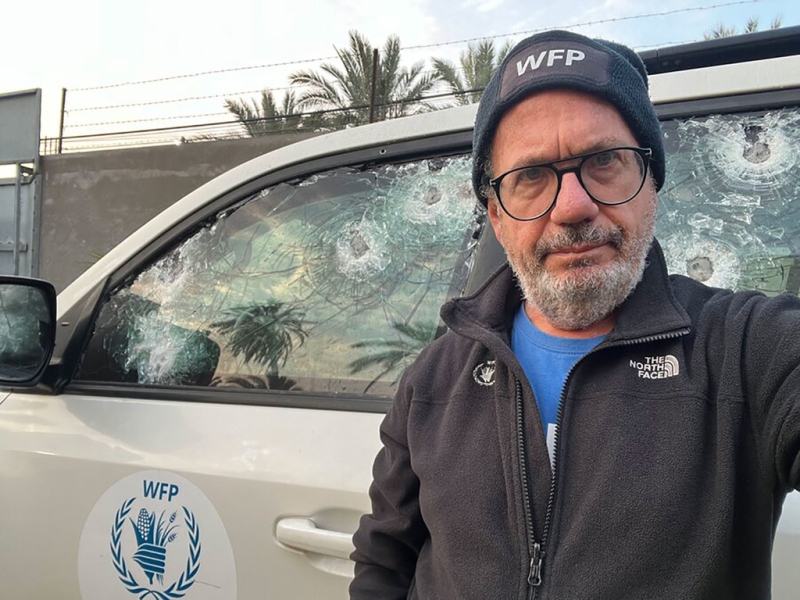
Jonathan Dumont is the Chief of the World Food Programme’s Emergency Liaison Office.
A huge amount of vital supplies, including boxes of medicine, food and other aid, have accumulated at the border crossing. There were very few trucks there, and even fewer drivers with official permission to enter Gaza and able to navigate the destroyed roads, crowds of desperate people and armed bandits.
The Gaza Strip, roughly the size of Detroit, is now mostly rubble. I’ve been to many conflict zones over the past year – gang-ravaged Haiti, the eastern Democratic Republic of Congo, Sudan’s war-torn capital, Khartoum – but Gaza is in a different dimension, and its problems are on a different scale. Off the coast, waves rhythmically lap onto a Mediterranean beach, creating an illusion of serenity. On the other side, endless ruins lie, black smoke rising from smoldering buildings.
There’s another difference from many war zones: Gaza’s residents have no way to escape the conflict. They’re trapped.
Meanwhile, the threat of extreme famine is rapidly growing. According to the latest expert estimates, about 90 percent of the Strip’s population is malnourished. More than 300,000 people are likely to be experiencing catastrophic levels of hunger – the highest level of food insecurity on the UN scale.”
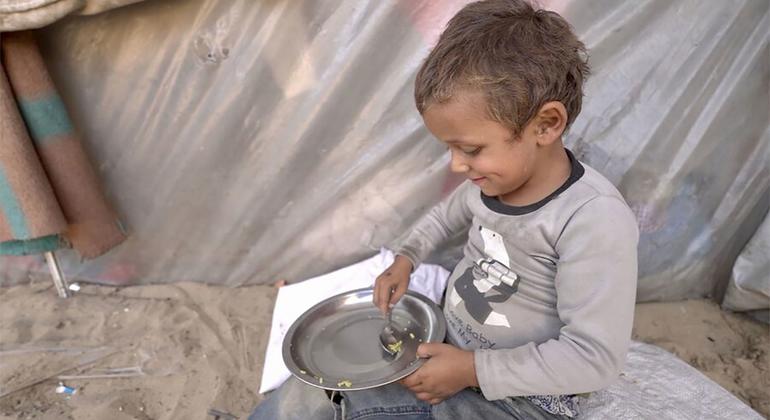
“People are hungry and angry”
“The amount of food aid WFP is allowed into Gaza can feed no more than a third of the hungry people. We have been forced to gradually reduce the rations over the past few months. In December, we planned to provide 1.1 million people with 10 days of food, providing them with canned goods, tomato paste, oil and wheat flour.
Besieged northern Gaza is the hungriest place in the enclave. Almost no food aid has reached it for the past two months.
“Bread is the main food for people these days because it is the most affordable,” baker Ghattas Hakura told me at a WFP-supported commercial bakery in Gaza City. After standing in a long, strictly controlled line, locals and displaced persons buy bread for three shekels, or less than a dollar per lavash.
“People are hungry and angry,” adds Hakura. “They have lost their homes, their jobs, their families. There is no meat or vegetables, and if there are any, they are very expensive.”
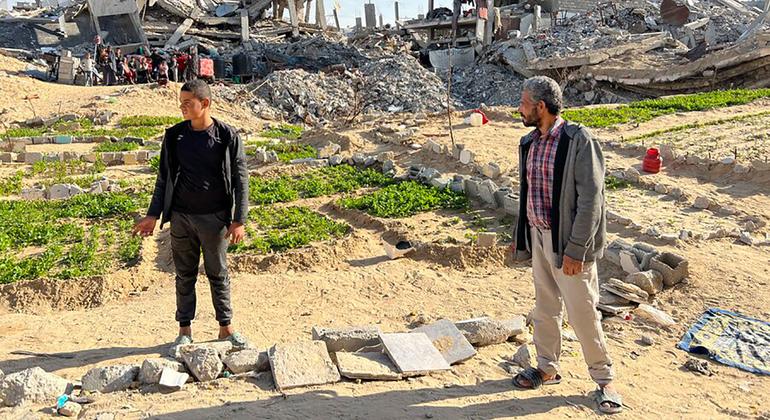
A 25-kilogram bag of wheat flour costs at least $150 here. Just two years ago, local farmers were harvesting a rich harvest of citrus fruits, vegetables, and strawberries. Now a kilogram of small peppers is sold at the Gaza City market for 195 dollars. But no one buys them – too expensive.
Cradling his baby daughter, Ibrahim al-Balawi told me that she had never tasted milk in her life. She has known nothing but war.
“I want my children’s future to be like that of any other child living in an Arab country,” Hind Hassouna, a mother of four, told me after distributing food in war-torn Khan Younis. “I want them to live a decent life, wear decent clothes, and eat healthy food. But most importantly, I want them to be free from constant fear.”
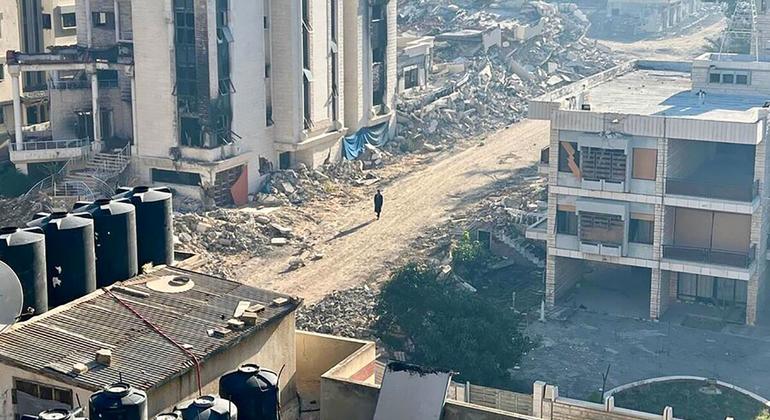
Children of Gaza
“Today, the children of Hassuna are forced to walk one and a half kilometers each way to fetch water. As she spoke to me in the tent-like home, which could be blown over by the wind or flooded by the winter rains, the children ate small portions of rice from the WFP rations. It was probably their first and only meal of the day.
Children in Gaza bear the brunt of the war. As we drove to distribute food in Khan Yunis, I noticed a dead horse in the rubble by the road. Nearby, a little girl was digging through the garbage, looking for food.
Later, as we drove in an armored vehicle along the militarized corridor dividing the north and south of the enclave, we saw human corpses scattered here and there, rotting in the sun. A few hundred meters further on, we encountered a small group of women and children carrying their meager belongings. They looked out of breath and tired.
How will such a terrible experience affect the children of Gaza when they grow up?What will happen to their generation?..»
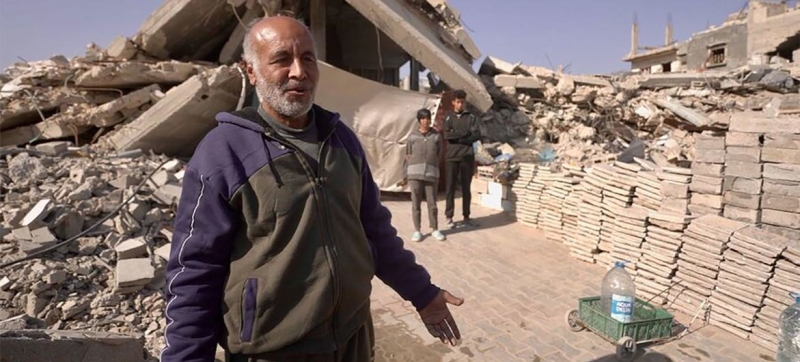
Abu Bilal from Khan Younis dug up his destroyed home and used rubble from nearby buildings to rebuild the walls.
Living in the Ruins
“Abu Bilal from Khan Younis dug up his destroyed home and used rubble from nearby buildings to rebuild the walls. Cement slabs from what used to be a multi-story apartment building form a peaked roof. Inside is a makeshift toilet and a sink made of plastic.
“Yes, it’s dangerous,” he says of his shelter, which could collapse during a storm or an airstrike.
Another local, Nabil Azab, showed me the remains of his home in a once densely populated area of Khan Younis. Nearby is the mangled hulk of a car that once allowed him, a former taxi driver, to make a living. Like many families in Gaza, Nabil has been forced to move from one tent camp to another several times.
The four-story building, one of the few remaining in the area, perches precariously on the top of a sandy ridge. Below, on the ground, Nabil’s family grows lettuce and other greens to survive. But it’s not enough.
“I look at my little daughter, who is constantly crying and asking for food, and I feel completely helpless,” he says. “I can’t do anything for her. Nothing at all…”»
